Trichomonosis
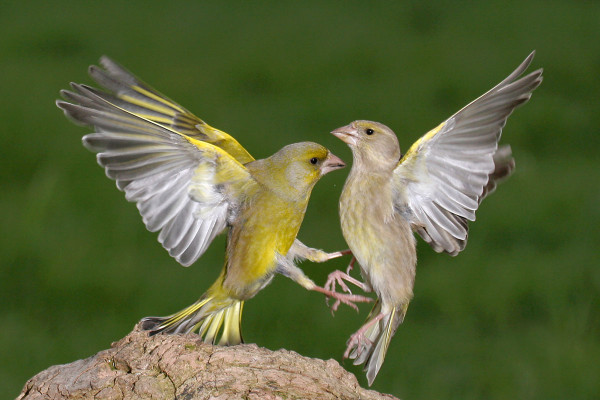
Species affected
Although known from pigeons, doves and birds of prey for some time, the disease came to prominence in summer 2005, when it was first noted in British finches. Epidemics of the disease occurred in 2006 and 2007, with smaller scale mortality events noted in subsequent years. Greenfinches and Chaffinches are the species that have been most frequently affected, but the disease has also been documented in other garden bird species, including House Sparrow, Dunnock, Great Tit and Siskin.
Pathology & disease spread
Trichomonas typically causes disease at the back of the throat and in the gullet. Affected birds show signs of general illness (lethargy, fluffed-up plumage) and may show difficulty in swallowing or laboured breathing. Some individuals may have wet plumage around the bill and drool saliva or regurgitate food that they cannot swallow. In some cases, swelling of the neck may be evident. The disease may progress over several days or even weeks.
The trichomonad parasite is vulnerable to desiccation and cannot survive for long periods outside of the host. Transmission is most likely to be through contaminated food or water, e.g. where a bird with difficulty swallowing regurgitates food that is then eaten by another individual. Trichomonas gallinae is a parasite of birds and does not pose a health risk to humans or their mammalian pets.
BTO researchers, working alongside others involved in the Garden Bird Health initiative, used Garden BirdWatch and other data to establish the impact of this disease on Greenfinch and Chaffinch populations. The results of this work revealed a substantial population decline in those areas where disease incidence was greatest. Find out more about this work and read the paper.
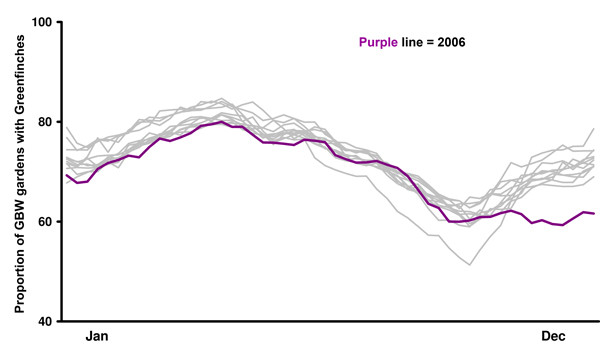
What you can do
Follow sensible hygiene precautions as a routine measure when feeding garden birds and handling bird feeders and tables. Empty and air dry any bird baths on a daily basis. Clean and disinfect feeders and feeding sites regularly. Suitable disinfectants that can be used include a weak solution of domestic bleach or other specially-designed commercial products. Carefully rinse all surfaces with clean water and air dry before using. Clean your feeders outside and maintain careful personal hygiene, including wearing gloves and making sure that brushes and buckets are not used for other purposes, as some diseases can affect human and domestic animal health.
Rotate positions of feeders in the garden to prevent the build up of contamination in any one area of ground below the feeders. If you see birds of any species that you suspect may be affected by disease in your garden, particularly if you see multiple sick or dead birds, we recommend that you stop feeding for at least two weeks in order to encourage birds to disperse, thereby reducing the chance of birds infecting each other at your feeding stations. Only reintroduce feeding as long as you are no longer seeing birds with signs of disease, and closely watch for any further signs. If you see further signs of disease, once again stop feeding. We also recommend leaving bird baths empty until no further sick or dead birds are seen.
Birds and Hygiene leaflet
Report disease in your garden
If you wish to report finding dead garden birds, or signs of disease in garden birds, you can do so through Garden Wildlife Health, our online reporting scheme.
Report to Garden Wildlife HealthChaffinches are in crisis
We urgently need your help to understand why the UK breeding population of Chaffinch has fallen by a quarter in just five years.


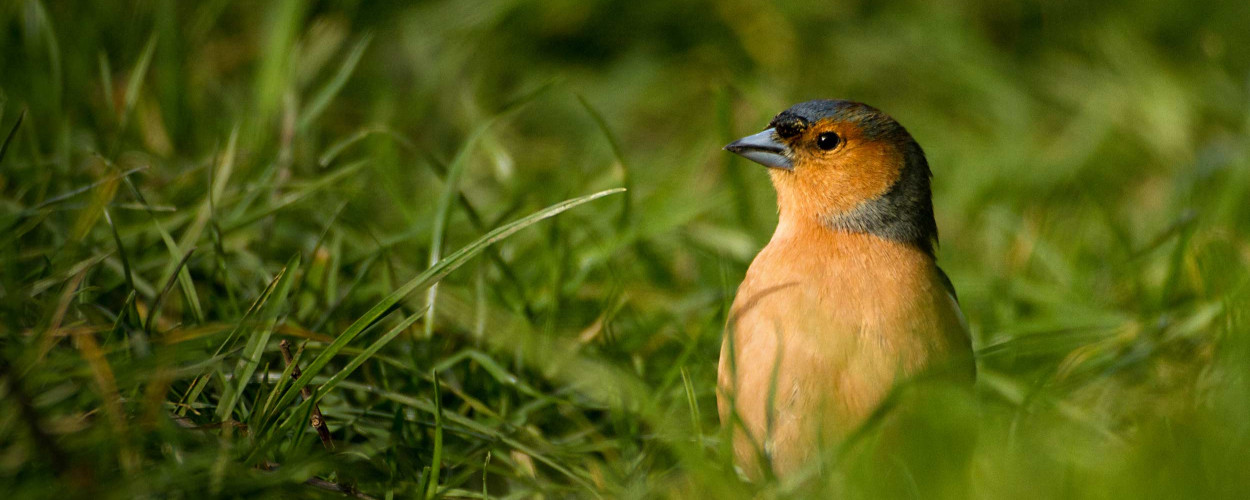
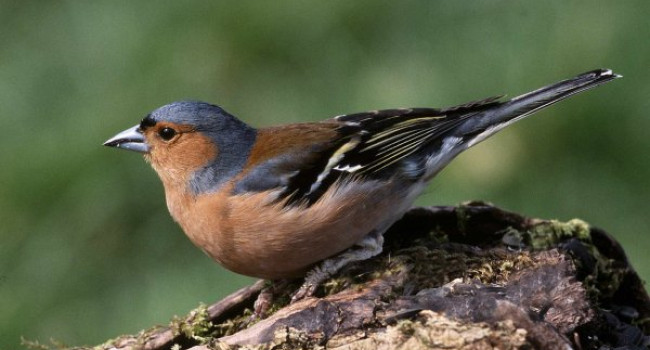
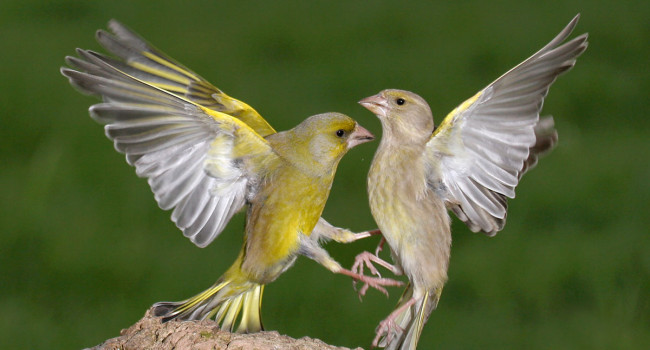


Share this page